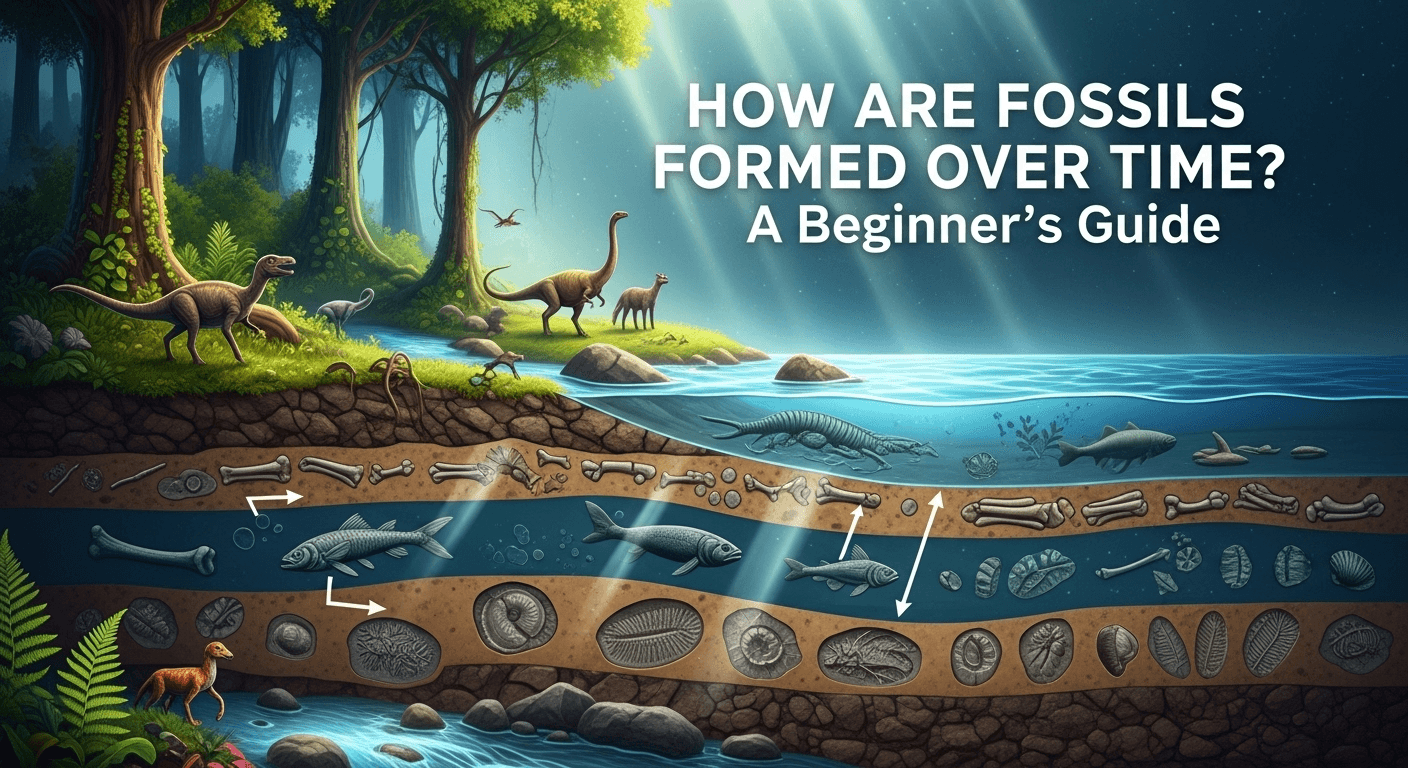How Are Fossils Formed Over Time? A Beginner's Guide Fossils are the time capsules of Earth's history, preserving evidence of ancient life across millions of years. If you've ever wondered how are fossils formed over time, this guide breaks down the processes, conditions, and scientific techniques that turn living organisms into the rock record. Understanding fossil formation helps us reconstruct past environments, evolutionary changes, and even climate shifts. Below, you'll find clear explanations, numbered sub-sections, practical examples, a comparison table, and answers to common questions—designed for beginners yet useful for long-term SEO relevance. The Basics of Fossilization Fossilization begins with an organism's death and depends heavily on how quickly it is buried and what happens chemically and physically afterward. Without rapid burial, remains are often scattered by scavengers, decomposed by microbes, or eroded by weather. Sediment—such as mud, sand, or volcanic ash—serves as the protective blanket that initiates fossil formation. Not all organisms fossilize equally. Hard parts like bones, teeth, and shells are far more likely to survive long enough to fossilize than soft tissues such as skin, muscles, or internal organs. However, under special conditions (low oxygen, rapid burial), soft tissues can be preserved as well, giving extraordinary snapshots of ancient life. Fossilization is not a single event but a series of overlapping processes—decay, burial, mineral replacement, compression, and sometimes chemical alteration. These processes can produce different fossil types (e.g., petrified bones, molds, casts, or carbon films), each telling part of the story of how the organism became preserved. H3 1. Types of Fossils (1) There are several primary types of fossils, each formed by distinct physical and chemical pathways. Body fossils, such as bones and shells, preserve the actual remains of organisms. Trace fossils—like footprints, burrows, and coprolites (fossil dung)—record an organism's activity rather than its body. A third category includes chemical fossils or biomarkers, which are organic molecules retained in sediments that indicate biological activity (for example, certain lipid molecules that point to microbial mats). Each fossil type gives scientists different kinds of information—morphology, behavior, diet, or environment. H3 2. Common Environments for Fossilization (2) Certain environments favor fossil preservation: river deltas, lake bottoms, floodplains, tar pits, peat bogs, and the ocean floor. Rapid sedimentation zones—such as deltas—bury remains quickly, shielding them from oxygen and scavengers. Anoxic (oxygen-poor) environments reduce decay and the action of microbes, increasing the chances of tissue preservation. Volcanic ash can also create excellent fossil-bearing deposits by providing rapid burial and fine-grained sediment that captures delicate features. Even deserts can preserve fossils when remains are buried quickly by wind-blown sands. Understanding these environments helps paleontologists target likely fossil sites. Step-by-Step: How Are Fossils Formed Over Time? Fossil formation is a stepwise process influenced by biology, sedimentology, and chemistry. Below are the most common stages that explain how are fossils formed over time in practical terms. H3 1. Rapid Burial (1) Rapid burial is the first critical stage. Without it, decomposition and scavenging remove most evidence. Events such as floods, landslides, volcanic ash falls, or sudden sediment slumping can bury organisms within hours to days. This burial isolates remains from oxygen and many decay agents. Rapid burial also promotes preservation of fine details, such as feather impressions or skin texture, when sediments are fine-grained (e.g., silt or clay). The speed and type of burial determine whether the fossil will be a body fossil, a trace fossil, or ephemeral chemical signatures in sediments. H3 2. Permineralization and Mineral Replacement (2) After burial, mineral-rich groundwater circulates through the sediment. In permineralization, dissolved minerals (commonly silica, calcite, or iron compounds) precipitate into pores and cellular spaces of organic tissues, strengthening and preserving structure. This process is typical in petrified wood and many bone fossils. Replacement occurs when original organic material dissolves and is replaced molecule-by-molecule by minerals. The external shape can be preserved in exquisite detail even if the internal chemistry changes. Both processes may occur simultaneously, and the resulting fossil can survive for millions of years. H3 3. Compression and Carbonization (3) In low-oxygen conditions, especially for plants and soft-bodied organisms, compression and carbonization are common. Organic material is compressed by overlying sediments, expelling volatile compounds and leaving a thin carbon-rich film that preserves outlines and fine details. Coalified plant fossils and many leaf impressions are examples. Carbonization typically occurs in fine-grained marine and lake muds and often preserves delicate features such as venation in leaves or soft parts of invertebrates. The resulting fossil may not retain three-dimensional structure but provides valuable morphological data. Conditions and Factors That Affect Fossil Formation Fossil preservation is governed by a complex interplay of biological traits, geochemical conditions, and geological processes. These factors determine whether remains become fossilized and which fossilization pathway predominates. H3 1. Biological Factors (1) The organism’s anatomy is crucial: hard parts fossilize more readily than soft tissues. Shells made of calcium carbonate or bones rich in hydroxyapatite resist decay and are prime candidates for mineralization. Likewise, small robust organisms with protective exoskeletons (e.g., arthropods) are often overrepresented in the fossil record. Population size and ecology matter too. Abundant species that lived in sedimentary environments are more likely to be fossilized simply due to higher numbers and frequent contact with burial settings. Rarer organisms or those in erosive habitats leave fewer fossils, creating sampling biases paleontologists must account for. H3 2. Geological and Chemical Factors (2) Chemistry of the burial environment—pH, oxygen levels, and mineral saturation—affects the preservation path. Anoxic conditions greatly slow bacterial decay and favor both soft-tissue preservation and chemical fossilization. Mineral-rich waters promote permineralization and replacement. Tectonic activity and metamorphism can destroy fossils by heating, compressing, or recrystallizing rocks. Even if fossils survive burial, later uplift and erosion are needed to expose them for discovery. Thus, the geologic history following burial is as important as initial conditions. H3 3. Time and Taphonomy (3) Taphonomy is the study of what happens to organisms from death to discovery. Time is both friend and foe: while long periods allow mineralization to stabilize remains, prolonged exposure to





